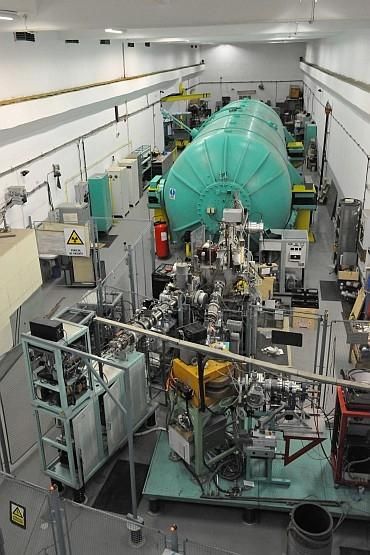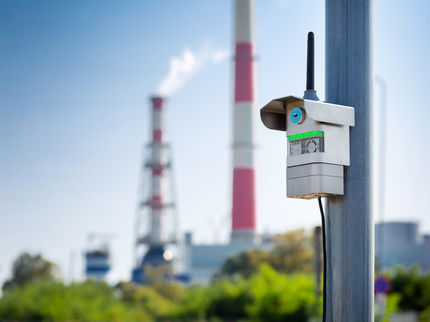Technological innovation: The smallest particle sensor in the world
Compact and energy-efficient sensor for mobile devices, informs in real time about the fine dust content in the air and warns in case of elevated values
It is slightly smaller than two one-cent coins stacked on top of each other, is particularly energy-efficient due to its size, requires no maintenance and can be integrated in mobile devices. It is the smallest particle sensor in the world. With this 12 x 9 x 3 millimetre innovation, smartphones, smart watches or fitness wristbands can for the first time measure the quality of the ambient air in real time and sound the alarm in the event of increased fine dust values.
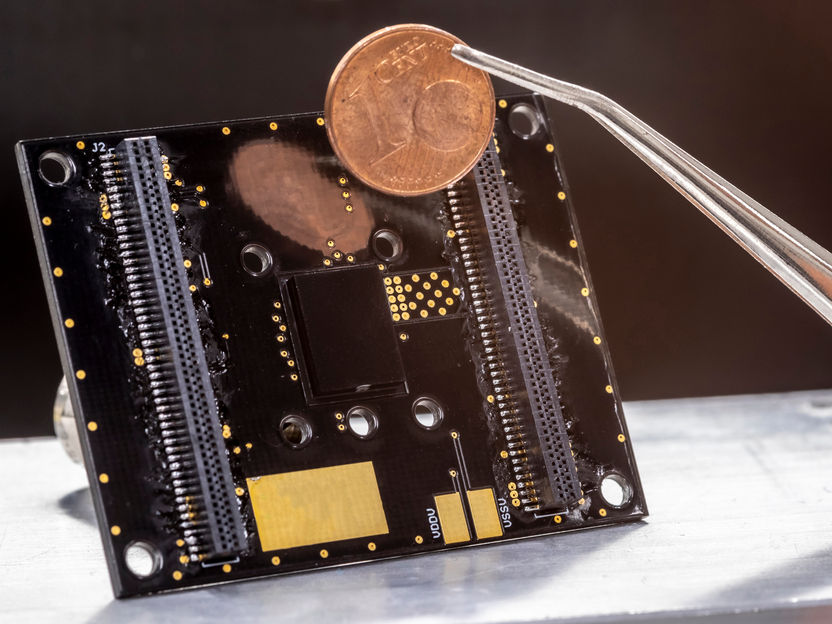
The prototype of the particle sensor (black square in the middle of the board) developed at TU Graz compared in size with a one-cent coin.
© Lunghammer – TU Graz
Innovative implementation
The sensor was developed by Paul Maierhofer as part of his dissertation at the Institute of Electrical Measurement and Sensor Systems at Graz University of Technology together with experts from the semiconductor manufacturer ams AG and with researchers from Silicon Austria Labs (SAL). The development was based on well-known methods of conventional measuring instruments as well as modern manufacturing and integration methods, which brought the project team together in an innovation process. The innovation is the miniaturization itself, as Maierhofer explains: "The sensor is right at the limit of what is physically and technically feasible and involves a lot of tricks to function at this size."
Adapting behaviour to ambient air
The immense social benefit of this new innovative particle sensor is obvious. According to a study by the European Environment Agency (EEA), over 400,000 people die prematurely every year in Europe alone as a result of particulate matter pollution. With the help of wearables equipped with the new particle sensor, each and every individual can monitor the ambient air and react immediately in the case of health-endangering fine dust values. "For example, by avoiding particularly polluted routes when jogging or on the daily commute to work," says Alexander Bergmann, head of the Institute of Electrical Measurement and Sensor Systems at TU Graz and doctoral supervisor of Paul Maierhofer.
Improving air quality
Not only in wearables, the sensor can also be integrated in local applications – both in the home and outdoors – and thus provides an unprecedented variety of measured values. Bergmann is convinced that this represents a break from the past in air quality monitoring: "Close-meshed and comprehensive monitoring of air quality has so far failed due to the size, complexity and cost of currently available measuring sensors. Our particle sensor fills a gap here." The data obtained can serve as a basis for further regulatory measures and raise public awareness of the particulate matter problem.
The series production aimed at by semiconductor manufacturer ams is intended to achieve a price that is significantly lower than the currently available sensors.
Other news from the department science

Get the chemical industry in your inbox
By submitting this form you agree that LUMITOS AG will send you the newsletter(s) selected above by email. Your data will not be passed on to third parties. Your data will be stored and processed in accordance with our data protection regulations. LUMITOS may contact you by email for the purpose of advertising or market and opinion surveys. You can revoke your consent at any time without giving reasons to LUMITOS AG, Ernst-Augustin-Str. 2, 12489 Berlin, Germany or by e-mail at revoke@lumitos.com with effect for the future. In addition, each email contains a link to unsubscribe from the corresponding newsletter.
Most read news
More news from our other portals
See the theme worlds for related content
Topic World Particle Analysis
Particle analysis methods allow us to study tiny particles in various materials and reveal their properties. Whether in environmental monitoring, nanotechnology or the pharmaceutical industry, particle analysis gives us a glimpse into a hidden world where we can decipher the composition, size and shape of particles. Experience the fascinating world of particle analysis!

Topic World Particle Analysis
Particle analysis methods allow us to study tiny particles in various materials and reveal their properties. Whether in environmental monitoring, nanotechnology or the pharmaceutical industry, particle analysis gives us a glimpse into a hidden world where we can decipher the composition, size and shape of particles. Experience the fascinating world of particle analysis!
Topic world Sensor technology
Sensor technology has revolutionized the chemical industry by providing accurate, timely and reliable data across a wide range of processes. From monitoring critical parameters in production lines to early detection of potential malfunctions or hazards, sensors are the silent sentinels that ensure quality, efficiency and safety.

Topic world Sensor technology
Sensor technology has revolutionized the chemical industry by providing accurate, timely and reliable data across a wide range of processes. From monitoring critical parameters in production lines to early detection of potential malfunctions or hazards, sensors are the silent sentinels that ensure quality, efficiency and safety.
Last viewed contents

Reinforcement of structures with Memory Steel
Laser_applications
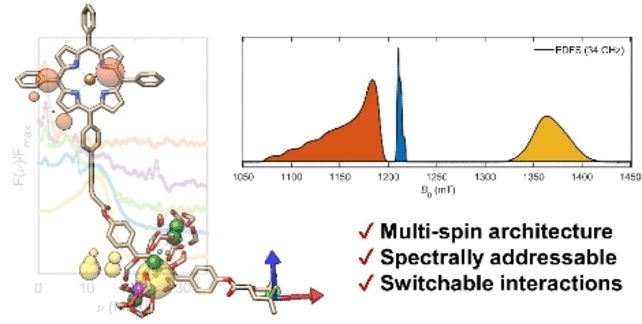
Spectroscopically Controlled Quantum Bits - A molecular multi-qubit model system for quantum computing
Diverse Functionalities Make Surfactants the Favourite Additive in Various Applications

Researchers overview recent progress and challenges in silicon-based anode materials for lithium-ion batteries
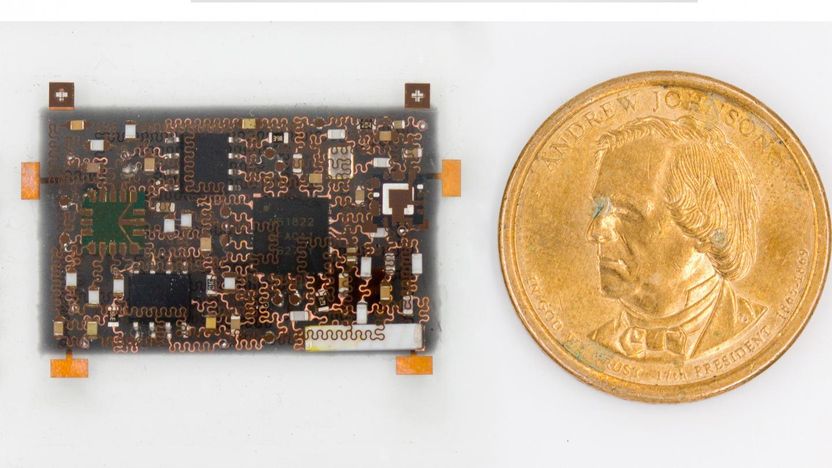
'Building up' stretchable electronics to be as multipurpose as your smartphone

Models for molecules show unexpected physics - Rice engineers show spinning magnetic particles surprisingly follow thermodynamic laws
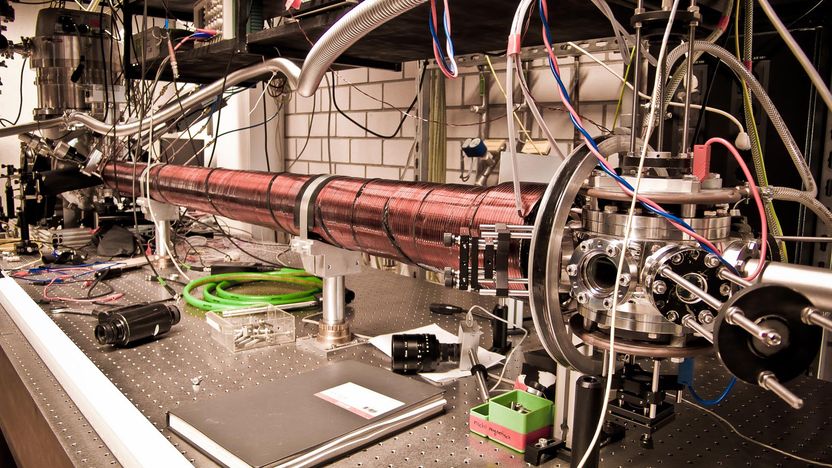
Help in the Search for the Needle in the Haystack - Physicists render usable method for detecting extremely rare inert gas isotopes for water dating
Category:EC_1.7.1
